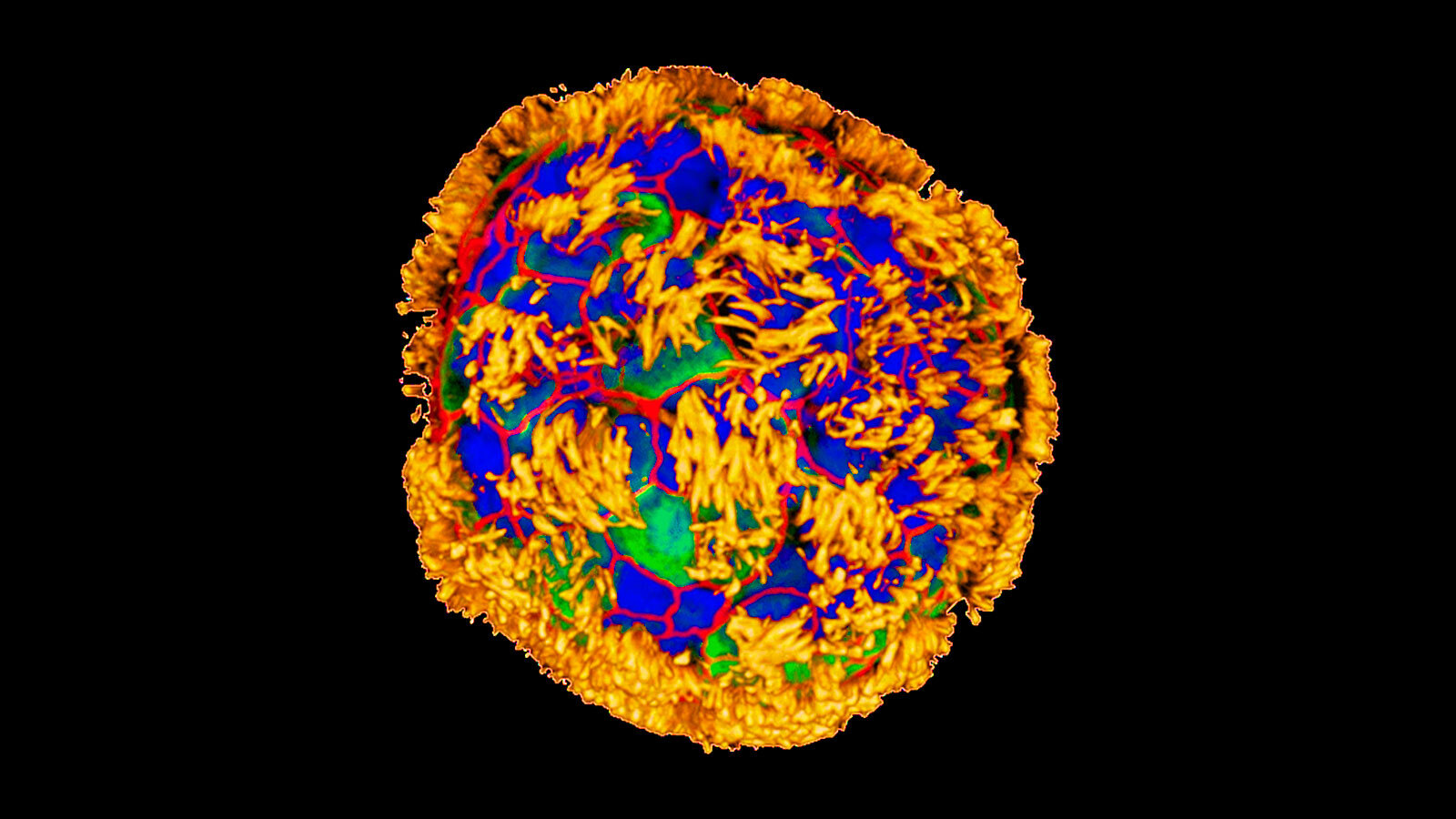Developmental biologist Michael Levin proposes an alternative approach to regenerative medicine: one that involves communicating with cells to trigger changes in tissues. He envisions a future where biomedicine relies less on chemistry and looks more like behavioral science.
By leveraging the native competencies of cells, Levin thinks researchers can achieve complex outcomes without micromanagement. He demonstrates this through the regeneration of frog legs by simply nudging cells toward the regenerative state.
Levin introduces “xenobots,” bio-robots formed by self-assembling frog skin cells. These xenobots are key to the regenerative medicine of the future, with the potential to create solutions for birth defects, reprogramming tumors, and even creating new organs. Levin emphasizes the moral imperative to pursue this research to address pressing medical needs.
Michael Levin: The modern assumption of regenerative medicine is that it's a clockwork. So if you have a gene regulatory network or a pathway, the only way you're gonna get it to do something different is through bottom-up rewiring. But if you're willing to entertain the idea that there are other competencies, you might find out that you're much better off giving stimuli to those tissues to get them to learn certain associations, and change their preferences and change their set points that will then cascade into complex, highly integrated interactions; almost like a telescope or a periscope for peering into another space to which we normally do not have access. So this is the opportunity before us.
If we were able to communicate to a set of cells exactly what it is that we want them to build, we would have the solution for birth defects, lost organs of various kinds and limbs. We could reprogram tumors back to normal. So all of this would be solved if we could communicate with the collective intelligence of cells. And so, the technology of the future is going to look a lot less like chemistry, and a lot more like a kind of behavior science or even a kind of computational psychiatry.
I'm Mike Levin and I'm a professor of biology at Tufts University. I'm also at the Wyss Institute at Harvard, and my group works on a variety of problems on diverse intelligence in natural, artificial, and hybrid systems.
We are very used to genetically defined hardware having a very particular outcome. Acorns make oak trees, frog eggs make frogs. When you ask about why a certain creature has a shape or a behavior, the answer is, "Well, the genome," then that's what determines it. But one of the amazing things we're finding is that around that standard outcome is an option space, a latent space of possibilities that is huge and diverse and very hard to guess at.
So for example, oak leaves are typically flat green things and you might look at those cells and say, "Okay, so the genome of the oak, it has the information that enables them to make this flat green structure." But if prompted by a parasite, such as a wasp embryo, in fact, these same cells can make a large, round, spiky, red object called a "gall." And these come in amazing shapes and sizes, and you you would've never known that a shape like that is within the possibility of these plant cells.
It is not a set of pushes and pulls that forces the chemistry to go a particular way. It is a set of signals that literally change the perception and the memory of that cellular system about what to do next. Almost every aspect of biomedical needs, all of these things boil down to one fundamental problem: How do we convince a group of cells to build a nice, healthy organ? We may not want to, in fact, we're not going to be able to micromanage all of the gene expression, all of the cells, all the stem cell activity towards complex states that we're trying to achieve: For example, regrow somebody's limb, or provide new eyes or normalize a tumor.
But, if we can take advantage of the native competencies of cells that are already good at solving certain kinds of problems, then we have a great ability to achieve large-scale outcomes that are too complex for us to micromanage. So I give a simple example: The frog, which is an animal that normally does not regenerate its legs as an adult, but what we've discovered is that actually we can give those cells a trigger that take them down to the path of building an entire leg. And it's not because we told it how to build a leg or where the leg goes, or how many toes the leg is supposed to have, none of that.
What we did was to communicate to those cells a simple prompt that causes them to take on the path of going in morphous space, of moving from that injured state to the regenerative state. And so, all of the tools of neuroscience, of behavioral science, they all work in other spaces: in morphological spaces and physiological spaces. And so this is now the opportunity for biomedicine.
So some of our recent work we produce something called a 'Xenobot.' It's a named after a Xenopus Laevis, is the name of the frog that we used, and "bot" because we think it's a biorobotics platform. At the simplest level, a Xenobot is what happens when you take some skin off of an early frog embryo. You take it away from all the instructive interactions and all the hacking that normally causes those cells to have this kind of boring two-dimensional life on the outer surface of the tadpole. And you, you ask them, "Well, what do you wanna do now that you're not being controlled by these other cells?" And what they do is self-assemble into this round little thing which we call a Xenobot that starts to move around on its own.
It rose against the water and against the bottom of the Petri dish that they're sitting on. But it also does things like spontaneously turn around. Another example, one of the amazing things that they can do, is they do something called 'kinematic self-replication.' So remember that we've made it impossible for these things to reproduce on their own because they're just skin. There's no neurons. None of the rest of the systems that are needed for frog-style reproduction are there. But if you provide them with loose materials, so basically loose skin cells in their vicinity, what they do is they run around and they collect those materials into little piles and they sort of shape the little piles and make a little snowball out of them.
That little ball matures into the next generation of Xenobot. And guess what it starts to do? It does exactly the same thing. It runs around collecting more cells and makes the next generation of Xenobot. This is basically Von Neumann's dream of a robot that goes around and finds materials in the environment and makes copies of itself. And none of this was obvious at all from what we know about frogs and tadpoles, and their genome. And so we're just scratching the surface now of what they're capable of. We're actively researching their ability to sense, and remember and what preferences they have, and can they learn and all of these things.
And so one answer to what is a Xenobot is it's a biorobotics platform where we can take advantage of the self-assembling properties of frog skin cells to make useful biological robots. It's not just that you could make living machines, synthetic living machines that do specific things, it's actually a sandbox in which you can learn the rules of morphogenesis; you can learn to prompt the system and actually understand what else is it capable of. And so I think that the Xenobots are just the first harbingers of a huge option space of novel bodies, novel minds that are going to be with us in the coming decades.
Just that first step into that world of truly diverse intelligence. Anytime a technology such as this comes along, there is a reaction from people which is basically, "Everything is fine." And what we need to do is make sure that these scientists don't screw it up. And I'm not even a clinician, but I'm here to tell you that I get phone calls daily from people with the most unbelievable medical needs. Things are not fine. I consider it to be an absolute moral imperative for all of us in the community to move forward with this work so that we can provide a better lived experience for everybody on Earth. We think very carefully about the ethics of all of these things, but that calculus is not just what could go wrong. The calculus is what is already wrong if you do nothing.






